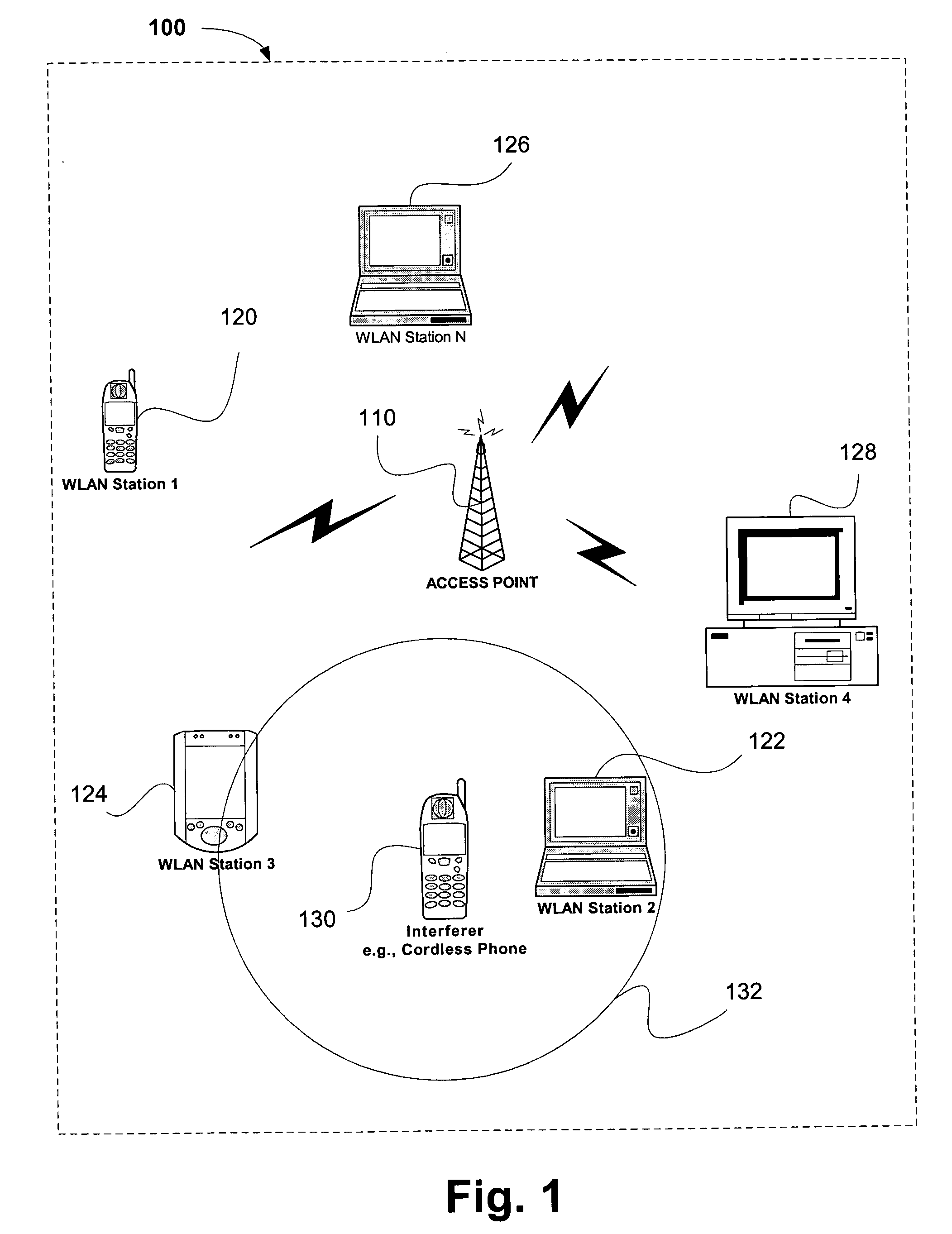Locating interfering devices in wireless networks using channel adaptation metrics
a wireless network and wireless network technology, applied in the direction of pulse technique, transmission monitoring, wireless commuication services, etc., can solve the problems of wireless network, unique problems of wireless communication system, and inability to receive transmitted signal energy among users
- Summary
- Abstract
- Description
- Claims
- Application Information
AI Technical Summary
Problems solved by technology
Method used
Image
Examples
Embodiment Construction
.
[0010] While the following detailed description may describe example embodiments of the present invention in relation to WLAN utilizing Orthogonal Frequency Division Multiplexing (OFDM) modulation, the embodiments of present invention are not limited thereto and, for example, can be implemented for other wireless networks and using other modulation schemes where suitably applicable.
[0011] The following inventive embodiments may be used in a variety of applications including transmitters and receivers of a radio system, although the present invention is not limited in this respect. Radio systems specifically included within the scope of the present invention include, but are not limited to: wireless local area network (WLAN) devices, wireless personal area network (WPAN) devices and wireless wide area network (WWAN) devices including network interface devices and peripherals such as network interface cards (NICs), base stations, access points (APs), gateways, bridges, hubs and netw...
PUM
 Login to View More
Login to View More Abstract
Description
Claims
Application Information
 Login to View More
Login to View More - R&D
- Intellectual Property
- Life Sciences
- Materials
- Tech Scout
- Unparalleled Data Quality
- Higher Quality Content
- 60% Fewer Hallucinations
Browse by: Latest US Patents, China's latest patents, Technical Efficacy Thesaurus, Application Domain, Technology Topic, Popular Technical Reports.
© 2025 PatSnap. All rights reserved.Legal|Privacy policy|Modern Slavery Act Transparency Statement|Sitemap|About US| Contact US: help@patsnap.com



